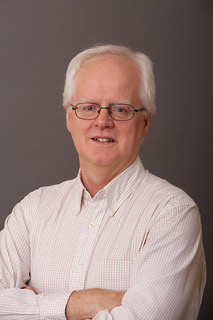Research Interests
Dr. James W. Canary’s group consists of interdisciplinary scientists who are interested in the control of the physical properties of materials by noncovalent interactions, stereochemistry, and molecular dynamics. Molecular modeling (including computational and graphical techniques) is used for the rational design of molecules with novel chemical properties. The molecules are then prepared by organic synthesis, and their properties are evaluated using a variety of methods.
One interest is in stereochemistry and molecular chirality, particulary in the use of stereodynamics to control the properties of materials. The vast majority of molecules in biology contain chiral centers, and in most cases, molecular chirality is central to the properties of naturally occurring compounds. However, far fewer compounds used in materials science are chiral. It seems likely that in the future that increasing complexity of synthetic materials will include unique compounds with novel properties arising from stereodynamics.
These interests in stereochemically unique, functional materials have led to investigations of molecular sensors and switches. Materials responsive to their environment can be used as sensors. Conversely, molecules that can influence their environment can be employed as actuators. Both types of application have been the focus of our research effort in recent years.
Studies of sensors have led recently to collaborations at the NYU School of Medicine related to molecular imaging. Research in this area requires highly interdisciplinary research teams, and we are fortunate to have at NYU a team of physicists, chemists, molecular biologists, pharmacologists, oncologists, neurobiologists, and radiologists working together on several projects in this exciting field.

